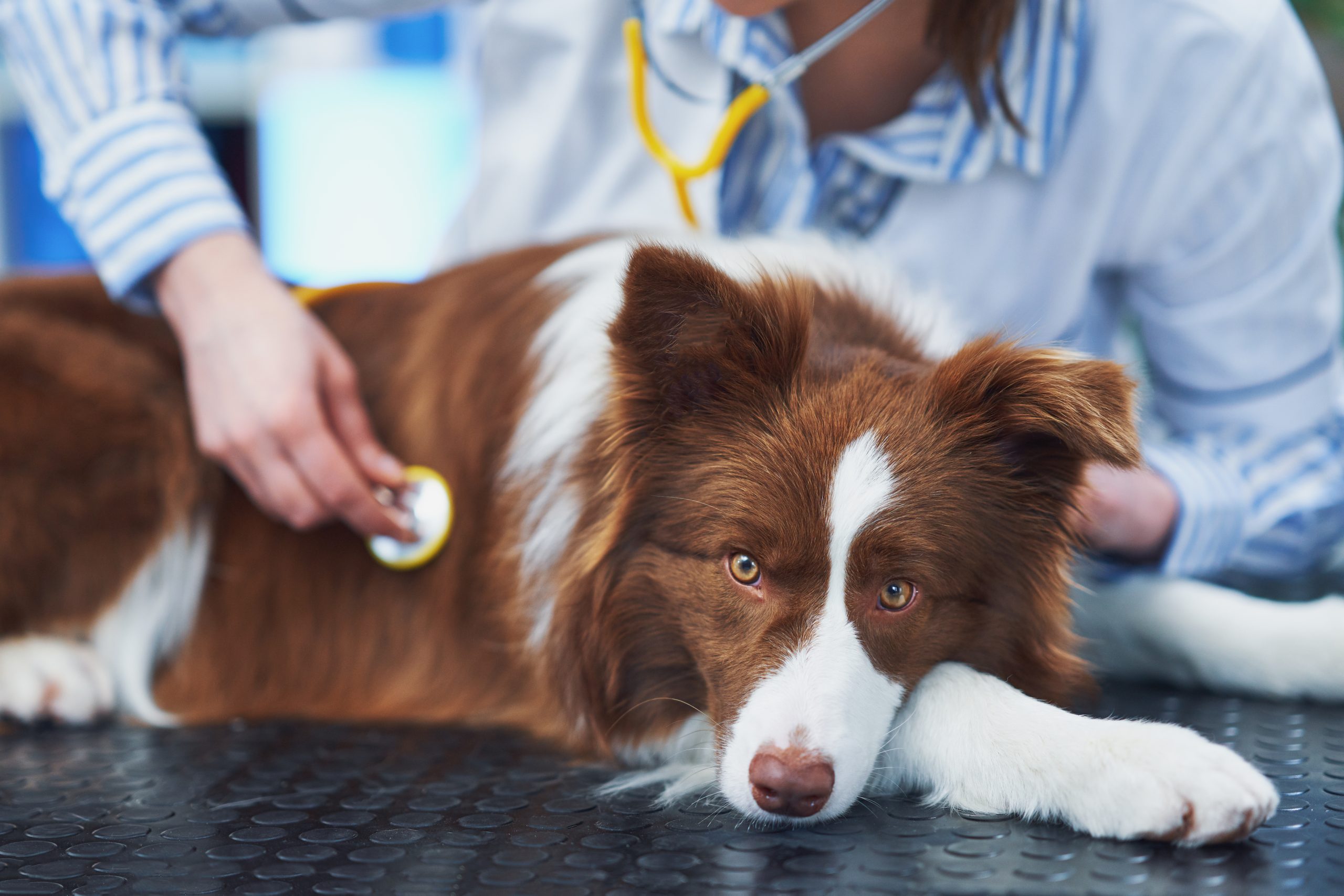Emergency and Critical Care Coverage: Why It Matters in Pet Insurance

Are you a pet owner? In this article, we will examine the various emergency and critical care services usually included in pet insurance, such as diagnostic tests, surgeries, hospital stays, and medications, among others. Additionally, we will discuss the potential costs involved and how pet insurance can help alleviate the burden.
If you’re considering pet insurance or already have a plan, understanding the importance of emergency and critical care coverage is crucial. By the end of this article, you’ll have a clear understanding of all the benefits of having pet insurance.
The Importance of Emergency and Critical Care Coverage In Pet Insurance
As someone who takes pet ownership seriously, your priority is the well-being of your pet. Unexpected emergencies and critical health issues can emerge, sometimes leaving you to make immediate decisions and possibly incur large veterinary bills. In such instances, the value of emergency and critical care coverage provided by pet insurance is invaluable.
Moreover, emergency and critical care coverage offers peace of mind. Knowing that your pet is protected in the face of unforeseen accidents or illnesses can alleviate stress and allow you to focus on their recovery.
Having a critical care plan in place can also help you make better decisions for your pet’s health. With comprehensive coverage, you and your pet can make treatment decisions based on what is truly best for your pet’s well-being rather than being constrained by financial considerations.
What Is Emergency and Critical Care Coverage?
Emergency and critical care coverage, often referred to as Illness and Injury or Accident and Illness coverage, in pet insurance is specifically designed to handle sudden and unexpected medical situations that require immediate attention. This coverage typically includes the costs of emergency veterinary visits, hospitalization, surgeries, medications, diagnostic tests, and other services necessary to stabilize and treat your pet.
In the unfortunate event that your pet experiences an accident or develops a severe illness, emergency and critical care coverage ensures that you can afford the necessary treatments and procedures. It provides you with the financial means to give your pet the best chance of recovery without the concern of depleting your savings or incurring debt.
It’s important to note that each pet insurance policy may have different limits and exclusions regarding emergency and critical care coverage. Therefore, it’s crucial to review the terms and conditions of the policy precisely to ensure you understand what is covered and what is not. Also, remember that pre-existing diseases are typically not covered by pet insurance, including emergency and critical care expenses related to those conditions.
Common Emergencies and Critical Conditions In Pets

Pets, just like humans, can experience a wide range of emergencies and critical conditions. These can vary from accidents such as fractures and lacerations to sudden illnesses like gastrointestinal obstructions or heart-related issues.
Accidents, such as a car accident, a fall from a height, or even a mishap in the backyard, often require emergency care. Having a pet insurance plan in place can help cover the costs associated with emergency veterinary visits, surgeries, and hospitalization that may be necessary to treat injuries sustained from accidents.
Pets can also develop sudden and severe illnesses that require immediate attention. Conditions such as pancreatitis, urinary tract obstructions, or even heart-related issues can arise unexpectedly and rapidly deteriorate without proper intervention. Emergency and critical care coverage can help cover the costs of hospitalization, medications, and diagnostic tests needed to diagnose and treat these critical conditions.
The Cost of Emergency and Critical Care for Pets
The total expense for emergency and critical care services for pets will vary based on multiple factors, such as the seriousness of the condition, the specific treatment needed, the duration of hospital stay, and the geographic location of the veterinary facility. The cost of emergency surgeries, ranging from hundreds to thousands of dollars, is contingent upon the complexity of the procedure and the required equipment.
Hospitalization costs can accumulate rapidly, especially if your pet requires intensive care or monitoring. Additionally, diagnostic tests such as X-rays, blood work, and ultrasounds can contribute to the overall expenses. Medications, both during hospitalization and for follow-up treatments, can also be a significant cost factor.
Without insurance coverage, these costs can be overwhelming, and you may have to make difficult decisions based on financial limitations rather than what is best for your pet.
How Does Emergency and Critical Care Coverage Work In Pet Insurance?
Emergency and critical care coverage in pet insurance typically works by reimbursing you for the eligible expenses incurred during emergencies or critical conditions.
When you have emergency and critical care coverage, you can take your pet to your regular Vet, an emergency veterinary clinic, or a specialized critical care facility, depending on the severity of the situation. The veterinary facility will recommend the necessary care and services to stabilize and treat your pet. Following the completion of the treatment, it is necessary to submit a claim to your pet insurance provider to obtain reimbursement.
To initiate a claim, you typically need to collect and submit pertinent documents, including the itemized invoice from the veterinary facility, medical records, and any other supporting documentation specified by your pet insurance provider.
Upon assessing your claim, the insurance company will provide reimbursement for the qualifying expenses by the terms outlined in your policy.
It’s important to note that most pet insurance policies have a deductible and a reimbursement percentage. A deductible is a sum you must pay before your insurance coverage begins. The reimbursement percentage signifies the portion of eligible expenses the insurance company will repay after the deductible has been met. These factors can vary depending on your chosen policy, so it’s essential to review and understand them before purchasing pet insurance.
Factors to Consider When Choosing a Pet Insurance Policy with Emergency and Critical Care Coverage
When choosing a pet insurance policy that includes emergency and critical care coverage, it’s essential to consider various factors to ensure your selected plan meets your pet’s specific requirements.

Coverage Limits
First and foremost, you should carefully review the coverage limits and exclusions of the policy. Each insurance provider may have different limits on the amount they will reimburse for emergency and critical care services, while others, like Odie, do not apply per-condition limits. Additionally, certain conditions or treatments may be excluded from coverage, so it’s crucial to understand what is included and what is not.
Deductible and Reimbursement Percentage of the Policy
Considering the deductible and reimbursement percentage of the policy is crucial. Choosing a higher deductible leads to lower monthly premiums, and it also involves covering more expenses out of pocket before the coverage takes effect. On the other hand, a higher reimbursement percentage means the insurance company will cover a more significant portion of the eligible expenses.
Waiting Periods
Additionally, you should consider the waiting period for coverage to take effect. Many pet insurance policies include waiting periods for emergency and critical care coverage, requiring a specific duration after policy purchase before you can make claims for those services.
Overall Cost of Policy
Finally, consider the overall cost of the policy, including the monthly premiums, deductibles, and any additional fees. Compare insurance providers and their plans to find the best balance between coverage and affordability. Remember that while tips may seem higher for comprehensive coverage, they can save you significantly in the long run if your pet requires emergency or critical care.
Tips for Maximizing Your Emergency and Critical Care Coverage
To make the most of your pet insurance policy’s emergency and critical care coverage, there are several tips you can follow:
- Look for comprehensive coverage that includes emergency and critical care services with reasonable deductibles and reimbursement percentages.
- Read the terms and conditions of the policy carefully—attention to coverage limits, exclusions, waiting periods, and other relevant details. A clear understanding of the policy will empower you to make informed decisions and prevent surprises when filing a claim.
- Proactively take measures to minimize the risk of emergencies and critical conditions. Consistent veterinary check-ups, vaccinations, and maintaining a healthy lifestyle for your pet can significantly decrease the probability of needing emergency care. Some pet insurance companies, like Odie, even offer a Wellness Plan that can be bundled with an insurance plan to help cover the cost of routine care.
- Familiarize yourself with your area’s emergency veterinary clinics or critical care facilities. Being aware of the location and having readily available contact information can save time and reduce stress during an emergency.
- Keep all relevant veterinary records and invoices organized. This will facilitate the claim process and ensure you have the necessary documentation when filing a claim.
By following these tips, you can ensure that your pet insurance policy’s emergency and critical care coverage is utilized to its fullest potential, giving you peace of mind and financial stability when it matters most.
Understanding the Limitations and Exclusions of Emergency and Critical Care Coverage
Although emergency and critical care coverage in pet insurance is intended to offer financial assistance during difficult situations, it’s crucial to be aware that there may be limitations and exclusions associated with this coverage.

Limits for Emergency and Critical Care Coverage
Each pet insurance policy may have specific limits on the amount they will reimburse for emergency and critical care services. It is essential to review these limits and ensure they align with your expectations and potential expenses. Additionally, certain conditions or treatments, such as pre-existing or experimental treatments, may be excluded from coverage.
Waiting Periods for Emergency and Critical Care Coverage
Waiting periods are also common for emergency and critical care coverage. This means that after purchasing a policy, you will need to wait a certain period before being eligible to claim those services. Waiting periods can vary, so it’s important to choose a policy with a waiting period that suits your needs.
It’s also important to note that pet insurance policies typically do not cover routine or preventive care. Vaccinations, annual check-ups, and routine dental care are usually not included in emergency and critical care coverage. Therefore, it’s essential to have a separate plan for routine care.
By comprehending the limitations and exclusions of emergency and critical care coverage, you can establish realistic expectations and make well-informed decisions regarding your pet’s healthcare requirements.
How Does Odie’s Emergency and Critical Care Coverage Work?
Odie’s Illness and Injury plan provides the most comprehensive, quality coverage for cats and dogs regarding emergency and critical care. This plan covers all breeds as young as eight weeks old with no upper age limits. As well as the flexibility to tailor coverage to fit your pet’s needs.
Odie’s illness and injuries policy provides coverage for the actual cost of veterinary treatment for various eligible diseases, disorders, sicknesses, Illnesses, Injuries, abnormalities, and/or syndromes displayed by your pet unless excluded by your tailored policy.
This includes:
- Accidents & injuries
- Hereditary & congenital conditions
- Emergency care
- Surgery
- Cancer treatment
- Outpatient care
- Dental disease and fractures
- Illnesses
- Diagnostics & Testing
- Hospitalization
- Specialist care
- MRI, CT scan & X-ray
- Ongoing & chronic conditions
The Illness & Injury policy provides coverage for the actual cost of veterinary treatment when an unexpected health event arises. Additionally, Odie Pet Insurance offers the opportunity to boost coverage. Supplement benefit options include the ability to choose any or all of the following:
- Office Visits and Exam Fees
- Take Home Prescription Medications
- Rehabilitation, Acupuncture, and Chiropractic Care coverage.
Coverage Limit
Like other pet insurance companies, Odie does not cover any pre-existing conditions or health issues associated with them. Pre-existing conditions refer to any illnesses that are either present 18 months before the policy’s effective date, or that occur during the waiting periods.
Additionally, preventative care is not covered under Odie’s insurance plans. Routine care items such as Wellness exams; vaccinations or titer tests; parasite control (e.g., flea control, tick control, heartworm medication, and deworming); spaying, neutering, and more are covered by Odie’s Wellness Plan, which can be added on to the purchase of an Insurance plan.
Odie’s Pet Insurance Claim Process
Submitting a claim with Odie is simple. The quickest and most convenient method for submitting a claim is through the member’s online account.
For Odie to process claims quickly, they ask members to provide copies of the itemized veterinary invoice(s), proof of payment/receipt, and detailed medical records (visit history, vet notes, lab results, etc. When submitting the first claim, it is essential to submit your pet’s complete medical history with doctor’s exam notes and any laboratory results. It’s crucial to thoroughly review your individual Odie pet insurance policy to comprehend coverage details, including the deductible amount, reimbursement level, coverage maximum amount, and any upcoming submission deadlines.
Odie members have 180 days from the treatment date to submit a claim as long as the treatment date comes after the Waiting Periods have been met.
Claims are processed as quickly as possible, typically within 3-5 business days, and any eligible reimbursements are sent directly to the Odie member. First-time claims may take longer, depending on when we receive your pet’s medical records.
Minimizing the Risk of Claim Payment Surprises
To reduce surprises in claim payments, it’s crucial to thoroughly read and understand the terms and conditions of your pet insurance policy. Here are some essential things to remember:
- Understanding Your Deductible: Familiarize yourself with the deductible outlined in your policy. A deductible represents an out-of-pocket expense that you need to meet before your pet insurance coverage becomes effective.
- Reimbursement Level: Odie’s pet insurance plans offer a reimbursement percentage of 90%, which means they cover 90% while you remain responsible for covering 10%.
- Coverage Maximums: Get informed about the coverage maximum specified in your policy to understand the highest amount Odie pet insurance will cover for eligible claims within the policy year.
Odie aims to process claims as quickly as possible, but times may vary depending on the type of loss and how long it takes to investigate the claim. To help speed up claims processing time, it is essential to ensure all required documentation has been submitted.
Comparing Pet Insurance Providers
When selecting a pet insurance policy, it’s crucial to consider its overall monthly or annual cost. Review various plans from different providers until you find one that aligns with your budget and coverage needs. Odie’s rates are typically around 20% more affordable than others:
- Price: When choosing an insurance policy for your pet, a key factor to consider is its overall monthly or annual cost. Take the time to examine plans from different providers until you discover one that fits within your budget and meets your coverage requirements.
- Coverage for All Pets: Before settling on a provider, investigate whether their coverage extends to dogs of all ages, breeds, and diagnoses. Opting for such plans ensures that your pup receives the necessary care. Odie covers all dog and cat breeds, starting at seven weeks, with no upper age restrictions.
- Routine Care Reimbursement: Pet insurance policies generally do not include routine care coverage. If you need assistance covering routine veterinary expenses like vaccinations, wellness exams, and preventive treatments, you’ll need to obtain an additional wellness plan for reimbursement. Odie provides two tiers of Wellness Plans, tailored to the age of your pet.
For a more in-depth understanding of various pet insurance providers and to compare their offerings, you can consult our comprehensive Pet Insurance Comparison Guide.
Accident-only Plan
Odie’s Accident Only Plan covers emergency vet care. For as little as $45 a month for a dog or $25 a month for your cat, you can rest assured your furry friend is covered for emergencies and mishaps. This plan is an excellent option for first-time pet owners, cats and dogs with pre-existing conditions, and budget-conscious dog parents.
Illness & Injury Plan
Odie’s Illness & Injury Plan covers illnesses, injuries, and other medical situations like hip dysplasia surgery. Other expenses include lab tests, cancer treatment, CT and MRI scans, emergency vet visits, and overnight stays. This comprehensive plan is perfect for a young puppy or a dog without a pre-existing condition.
Wellness Plan
Odie’s Wellness Plan is an add-on to existing pet insurance. The Basic or Plus plan is a great option for pets of all ages. Wellness plans help pet parents stay updated on routine care, including vaccines, flea/tick medication, heartworm preventatives, microchipping, and more.
Conclusion
In conclusion, emergency and critical care coverage is a crucial component of pet insurance that pet owners should consider. It offers peace of mind, financial stability, and the freedom to make optimal decisions for your pet’s health without being constrained by financial limitations.
Emergency and critical care coverage ensures that your pet can receive prompt and appropriate medical attention in the event of an emergency or critical condition. It covers various services, including diagnostic tests, surgeries, hospitalization, medications, and emergency veterinary visits. With this coverage, you can have peace of mind knowing that your beloved pet will receive essential care when they need it the most.
The cost of emergency and critical care for pets can be significant, and without insurance, it can be challenging to afford the necessary treatments and procedures. Emergency and critical care coverage lets you ease the financial burden and concentrate on your pet’s well-being and recovery.
Frequently Asked Questions About Pet Insurance
What Is Pet Insurance and How Does It Work?
Pet insurance is a type of coverage designed to pay for veterinarian expenses when your pet becomes ill or injured by providing reimbursement of eligible veterinary costs after you’ve paid directly for them from your veterinarian.
Is Pet Insurance Worth It?
Pet insurance can provide financial security while guaranteeing your pet receives medical attention. To learn more about the benefits of pet insurance, read our article on Pet Insurance: Top 10 Benefits of Pet Insurance from a Vet’s Point of View.
How Do You Use Pet Insurance?
Utilizing pet insurance is a straightforward process: after paying the veterinary bill, submit a claim with all required documentation to your provider, who will review and reimburse eligible expenses according to your policy coverage. Please refer to your policy documents or provider for instructions on filing claims.
How Does a Pet Insurance Deductible Work?
Your deductible for pet insurance refers to the out-of-pocket expense you must meet before coverage kicks in. Once this threshold has been reached, insurance providers reimburse eligible expenses according to policy terms, which are reset annually or biannually. For more details, please consult your policy documents or reach out directly.
What Is the Best Pet Insurance?
The best pet insurance provider and plan depend on your unique requirements and preferences. Odie provides two insurance plans: the Illness & Injury Plan and the Accident Only Plan. Factors to consider include coverage, pricing, deductibles, and reimbursement levels when making this choice.
How Do You Know Which Vets Accept Pet Insurance?
Most veterinary clinics and hospitals do not accept pet insurance policies directly. Instead, you must pay for the visit upfront and get reimbursement from your insurance company afterward.
Can Pet Insurance Cover Neutering?
Pet insurance does not include neutering, but you can purchase an add-on wellness plan to get this coverage. Reviewing policy documents or contacting your provider to get complete details of coverage for neutering is advisable.
Can Pet Insurance Drop You?
Pet insurers only drop or cancel your coverage if you make timely premium payments and comply with the terms and conditions of the policy. However, you must read your policy documents to understand their cancellation policies and any circumstances that may lead to their discontinuance.
Can Pet Insurance Be Canceled?
Yes, pet insurance policies may be canceled either by the policyholder or their provider for various reasons. Please review your policy documents or contact us directly for canceling coverage instructions.
Does Pet Insurance Cover Antibiotics?
In general, yes. Most policies include coverage for antibiotics prescribed by veterinarians to treat an eligible condition or illness. Nonetheless, coverage will depend on both policy and provider; please read your policy documents or reach out directly for details of medication coverage.Where Can I Purchase Pet Insurance?
Pet insurance can be found from various providers, including Odie. To discover and purchase it on our website, click Get a Quote. You will be asked to provide some information about your pet and yourself, and from there, we will recommend a pet insurance policy. You will have the flexibility to compare coverage add-ons and remove certain benefits until you find the plan that works for you and your pet.
Why Is Having Pet Insurance Important?
Owning pet insurance provides financial security and peace of mind in case an unexpected accident, illness, or injury should arise that necessitates medical care for your beloved companion. Pet insurance enables you to make decisions that best benefit them without worrying about excessive vet bills.
Will Pet Insurance Cover My Surgeries for My Pet?
Pet insurance often covers surgeries, but the coverage depends on plan details and terms. Pet insurance will typically cover necessary surgeries for your pet; however, exact coverage will depend on both policy type and provider. Therefore, reviewing policy documents or contacting them directly is the best to better understand how surgical coverage applies in each situation.
Does Pet Insurance Cover Luxating Patella Treatment in Pets?
Yes, pet insurance will cover treatment of luxating patella – a common orthopedic condition among pets – provided your policy covers it. Coverage may differ depending on provider and policy details.
Does Pet Insurance Cover Hernia Surgery for Pets?
Pet insurance usually covers the cost of hernia surgery; however, coverage can differ depending on your policy and provider.
When Can I Submit My Pet Insurance Claim for Vet Bills?
After paying directly for eligible veterinary bills, you can file a claim with your pet insurance provider for qualified expenses. Each provider may have specific requirements and procedures for filing claims, so it’s wise to consult your policy documents or contact them for guidance.
What Are the Main Types of Pet Insurance?
There are two primary forms of pet insurance plans. They include Illness & Injury and Accident Only Plans. An Illness and injury Plan covers unexpected illnesses or accidents, and an Accident Only Plan covers accidents explicitly. To learn more about these plans from Odie, visit the Illness & Injury Plan and Accident Only Plan pages.
What Is Excluded From Pet Insurance Policies?
Exclusions in pet insurance policies refer to conditions, treatments, or situations which aren’t covered. Exclusions vary based on policy provider, and specific exclusions may include pre-existing conditions, cosmetic procedures, breeding-related expenses, and certain hereditary conditions.
Does Pet Insurance Cover Pre-Existing Medical Conditions?
Pet insurance typically does not cover pre-existing medical conditions that were present before your insurance coverage was in effect. A pre-existing condition is any illness, injury, or symptom experienced before coverage began. You must review the terms and conditions or contact your provider to understand their position on preexisting conditions and any applicable waiting periods or exclusions.
Can Older Pets Be Insured?
Many pet insurance companies offer options for senior pets.
Many pet insurance providers offer coverage for older pets. Eligibility and coverage options will depend on the provider and the pet’s age, as some providers have age restrictions or pricing structures for senior pets that must be adhered to. It is highly advised that policy details or contact info from your preferred provider be reviewed thoroughly to confirm coverage for older animals.
Here is a guide on the benefits and limits of pet insurance.



